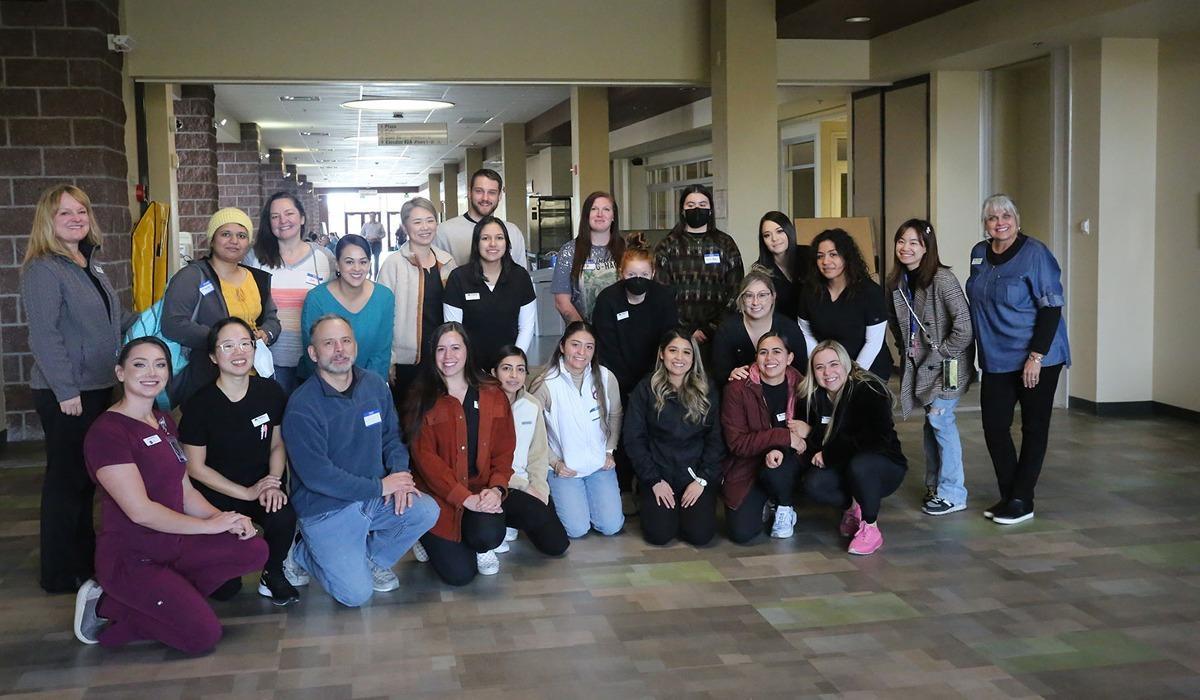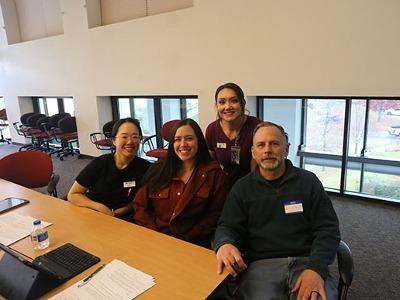
Recently, students from the Dietetic Technician, Dental Hygiene, and Social Work programs participated in an interprofessional collaboration learning exercise that would see each field of study actively brainstorm, implement, and encourage cross-sector strategies for the particular patient assigned to them. This innovative training mirrored a real-life scenario to build new interdisciplinary fundamentals, helping students become more confident in their abilities and recognize the significance of working closely with other providers.
Teams created a patient-centered care plan addressing their most pressing needs to streamline nutritional, oral, and social services access and clarify what each discipline can do. As partners began coordinating and sharing their ideas in Red Mountain Building 256, the inspiration behind cultivating authentic academic experiences unfolded vibrantly through the enthusiastic voices echoing in the room.
Patience and Persistence Are the Providers of Progress
Maroon, aqua, emerald, and onyx scrubs leaned in closely beside sweatshirts, hoodies, jackets, and t-shirts, a colorful illustration of the teamwork and communication used by specialists with varied aptitudes and a common goal. Each member contributed something essential and unique to their discipline, compiling an assessment utilizing their critical thinking skills from multiple perspectives that would benefit the patients' well-being considerably.
Wyatt Shaw, Marcela Cardenas, and Billy Owensby are students of the Dietetic Technician, Dental Hygiene, and Social Work programs, respectively. Their time with this collective assignment was enriching to them personally, discovering fresh elements of vocational partnerships they will retain throughout their careers.
“It’s great to know how to be a team player by working together, staying within your scope of practice, and acknowledging when you need to pass it off to a professional in their field. It’s valuable to get a holistic care perspective for a patient,” said Shaw.
How would they design a road map with actionable steps for those suffering from legitimate issues? Their active minds began thinking outside the box, tasked with overcoming this problem, tackling every barrier or hindrance that would impede them from providing exceptional quality care.

Students across multiple programs worked together to solve a patient's care needs.
Designating a pregnant woman as the center of their case study, one group found a language hurdle they needed to resolve. The dietary representative referred her to a social worker because the law requires that providers make translators available for necessary discussions. Social services recommended she make an appointment with a dental hygienist for preventative dental treatment, identifying how oral health can affect a growing baby. Suffering from a front tooth infection and damage, she also encountered complications chewing her food, so they advised her to see a nutritional consultant because she was not taking in the nourishment she needed.
While working in unison, the students learned from and about each other’s roles, responsibilities, and scope of practice while developing a collaborative care plan, resulting in an umbrella of health and wellness.
“I think these events help give us knowledge about what other professions do and the confidence to talk to those people. It helps our community because having more than one person involved in a patient’s health will optimally enhance them through better treatment of care and reduce errors and costs,” continued Cardenas.
“It’s a good way to fill in the gaps and understand that you’re not the only person involved in care. Build these relationships now and in the future because if somebody needs something, you can pass it off to someone more specialized,” finished Owensby.
As final presentations began winding down, student passion for their work was prevalent throughout the lesson. Attitudes appeared refreshed and open to the acceptance of not having all the answers, and that was okay because someone out there did. Instructors seemed proud of their progress over the three-hour undertaking, the leaders that make such an invaluable educational opportunity possible. Not to mention networking with those they’ll likely interact with once again after graduation. You know, Reno is the Biggest Little City. Familiar names and faces are bound to appear, and they’ll reflect on this chance to pool their skills, insights, and intuition to preserve a patient’s well-being.
“I think this experience has been beneficial for me to gap in the peripheries. It’s a choice you make every day, and one of the most important choices you can make is what you eat. Many people neglect that choice or knowledge of that field. I want them to have that, expressing it by teaching others and inspiring awareness in my community,” Shaw said.
“As a future dental hygienist, my role is oral and overall health. Knowing these resources to have my patients advocate for themselves was great for me, especially in understanding what dietitians and social workers do. The first thing I notice in a person is their smile. It’s a way for me to help people feel more confident about themselves and be happy,” Cardenas continued.
“This has heightened my understanding of how everybody has their specialty and priority, knowing how to piece all these resources together professionally. Being here today allows me to understand that I’m not the center of attention; rather, the patient is. I want to try and help others overcome obstacles I didn’t have help overcoming. To guide them to better their lives,” Owensby concluded.
For more information, please visit the Dietetic Technician, Dental Hygiene, and Social Work websites.






